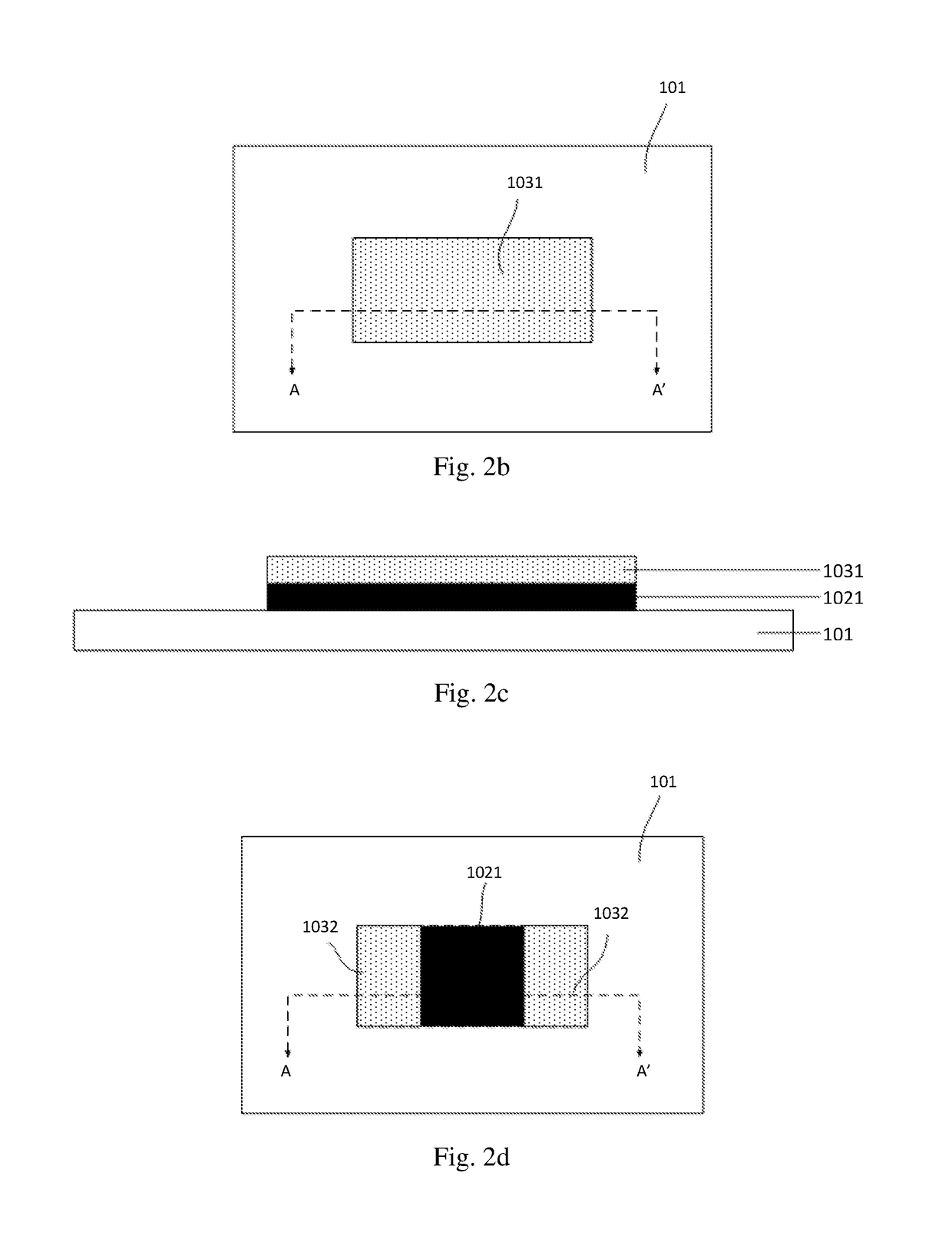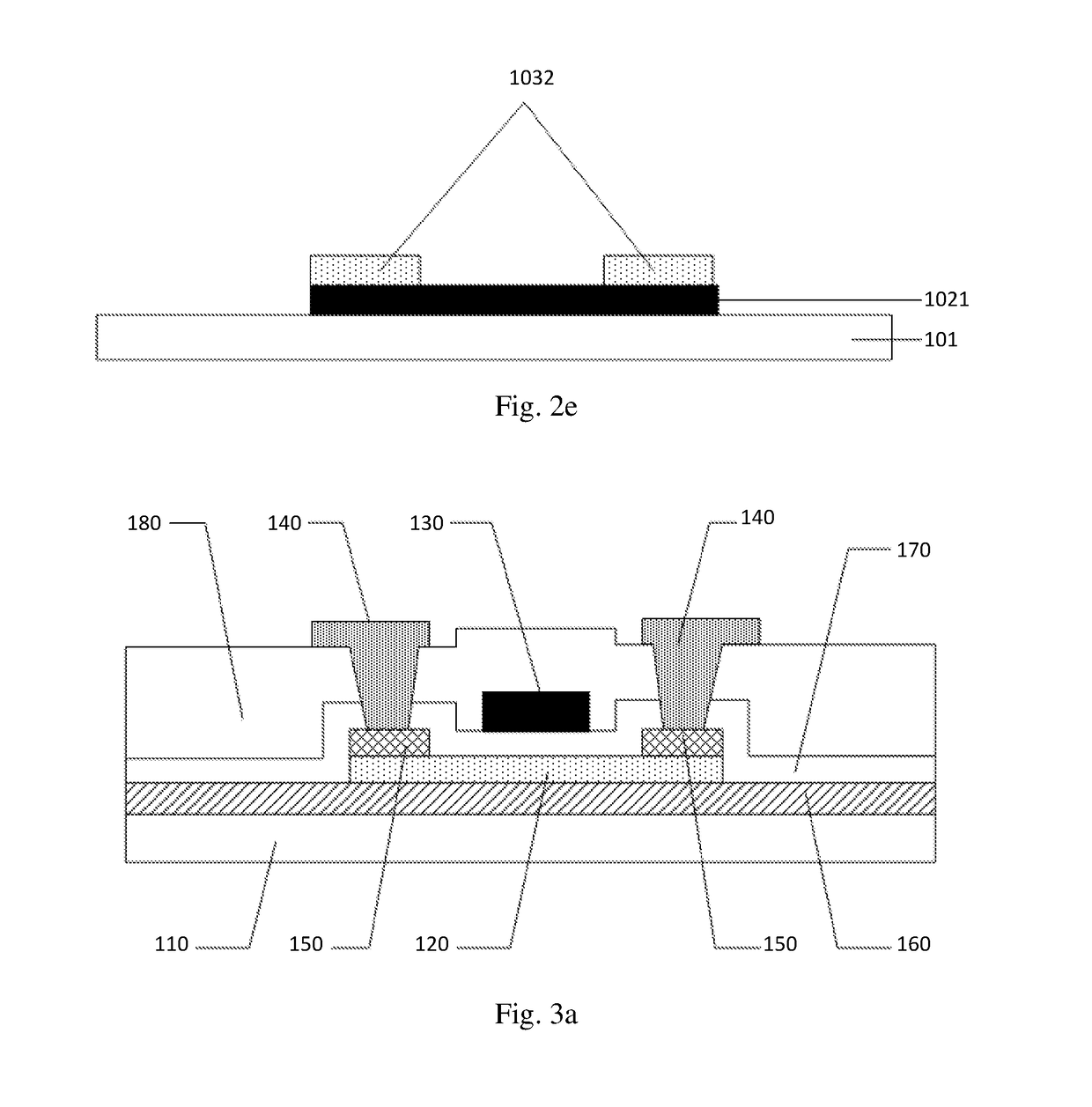Method for preparing graphene, thin-film transistor, array substrate, and display panel
a thin-film transistor and array substrate technology, applied in the field of semiconductor devices, can solve the problems of impurities being introduced, time-consuming and laborious, and the cvd method itself has great defects,
- Summary
- Abstract
- Description
- Claims
- Application Information
AI Technical Summary
Benefits of technology
Problems solved by technology
Method used
Image
Examples
Embodiment Construction
[0040]Embodiments of a method for preparing graphene, a thin-film transistor, an array substrate, and a display panel according to exemplary embodiments of the present invention will be described in details below, in conjunction with accompanying drawings.
[0041]In the accompanying drawings, the size and the shape do not reflect a true proportional relationship in a thin-film transistor and an array substrate, but they are only an illustrative description of the disclosure of the invention.
[0042]As shown in FIG. 1, a method for preparing graphene according to an exemplary embodiment of the present invention may comprise the following steps:
[0043]S101, forming an amorphous carbon thin film on a base substrate;
[0044]S102, forming a catalyst metal thin film on the amorphous carbon thin film;
[0045]S103, irradiating the base substrate with the amorphous carbon thin film and the catalyst metal thin film formed thereon using an excimer laser, so that the amorphous carbon thin film is conver...
PUM
| Property | Measurement | Unit |
|---|---|---|
| thickness | aaaaa | aaaaa |
| thickness | aaaaa | aaaaa |
| thickness | aaaaa | aaaaa |
Abstract
Description
Claims
Application Information
 Login to View More
Login to View More - R&D
- Intellectual Property
- Life Sciences
- Materials
- Tech Scout
- Unparalleled Data Quality
- Higher Quality Content
- 60% Fewer Hallucinations
Browse by: Latest US Patents, China's latest patents, Technical Efficacy Thesaurus, Application Domain, Technology Topic, Popular Technical Reports.
© 2025 PatSnap. All rights reserved.Legal|Privacy policy|Modern Slavery Act Transparency Statement|Sitemap|About US| Contact US: help@patsnap.com



